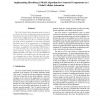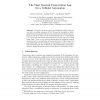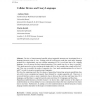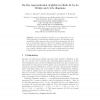367 search results - page 58 / 74 » Captive Cellular Automata |
IPPS
2007
IEEE
14 years 1 months ago
2007
IEEE
The GCA (Global Cellular Automata) model consists of a collection of cells which change their states synchronously depending on the states of their neighbors like in the classical...
CSR
2008
Springer
13 years 9 months ago
2008
Springer
Abstract. We study the group-valued and semigroup-valued conservation laws in cellular automata (CA). We provide examples to distinguish between semigroup-valued, group-valued and ...
FUIN
2007
13 years 7 months ago
2007
Devices of interconnected parallel acting sequential automata are investigated from a language theoretic point of view. Starting with the well-known result that each unary language...
ACRI
2008
Springer
14 years 1 months ago
2008
Springer
Abstract. Rule 54, in Wolfram’s notation, is one of elementary yet complexly behaving one-dimensional cellular automata. The automaton supports gliders, glider guns and other non...
ECAL
2007
Springer
14 years 1 months ago
2007
Springer
We introduce the concept of neutral emergence (defined by analogy to an information theoretic view of neutral evolution), and discuss how it might be used in the engineering of ro...




